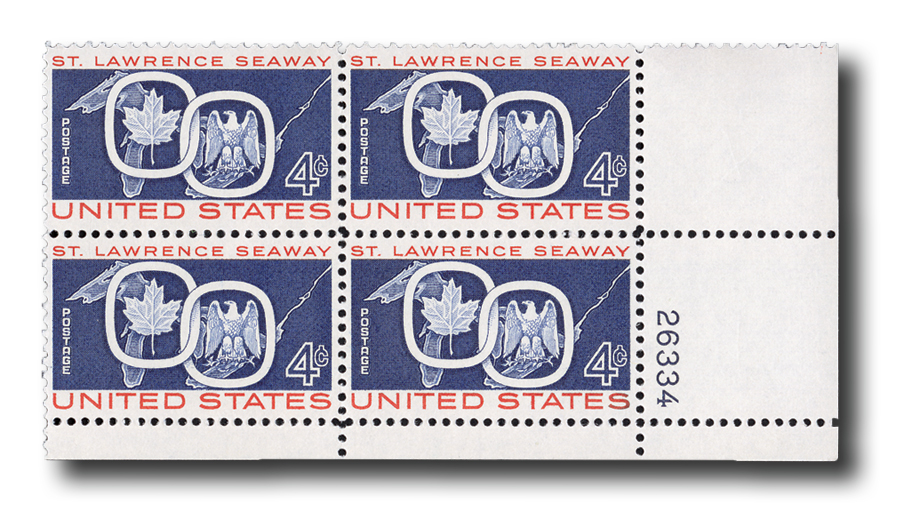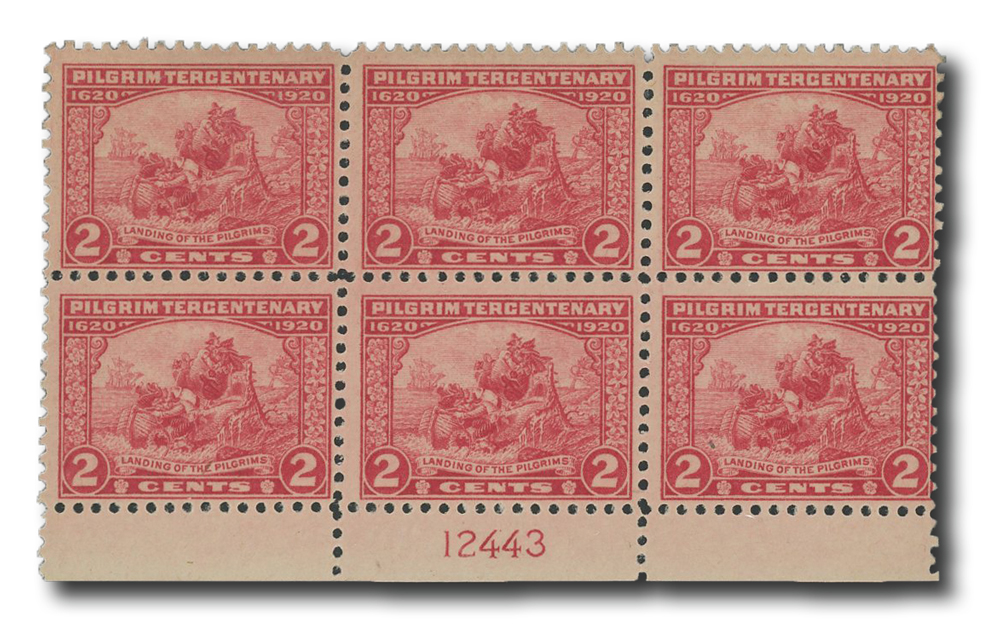Understanding Plate Numbers on U.S. Stamp Sheets and Plate Blocks
Posted by Mystic Stamp Co. on 10th Jul 2024
Collecting stamps is a rich and fascinating hobby that often leads enthusiasts down intriguing paths of historical significance and intricate details. One such captivating aspect is the collection of plate numbers on US stamp and plate blocks. These small numbers hold significant value for collectors, both in terms of historical context and rarity.
What are Plate Numbers?
Plate numbers on US sheet stamps are unique identifiers used during the printing process. These numbers are printed in the margins of the stamp sheets and correspond to the printing plate used to produce that particular sheet of stamps. The introduction of plate numbers dates back to the late 19th century, with the Bureau of Engraving and Printing (BEP) beginning this practice in 1894.
Plate numbers are crucial for several reasons:
- Quality Control: Plate numbers help in tracking and ensuring the quality of stamp production. If an issue arises, the specific plate can be identified and corrected.
- Identification: Collectors use plate numbers to identify different printings of the same stamp design, which can vary in shade, perforation, or other features.
- Scarcity and Value: Stamps with certain plate numbers can be rarer than others, increasing their value among collectors.

What are Plate Blocks?
A plate block is a block of stamps that includes the plate number in the margin. Traditionally, a plate block consists of four or more stamps from the corner or edge of a sheet, with the adjacent margin showing the plate number.
Types of Plate Blocks
- Traditional Plate Blocks: Typically include four stamps (a 2x2 block) and the adjacent margin with the plate number.
- Modern Plate Blocks: Can include larger blocks of six or more stamps, especially for issues where multiple plate numbers are printed across the sheet.
Collecting Plate Blocks
Collecting plate blocks adds an extra layer of interest and challenge to stamp collecting. Here are a few reasons why collectors seek out these unique items:
- Historical Significance: Plate blocks provide a snapshot of the printing process and the era in which the stamps were produced. They often reflect changes in printing technology and practices over time.
- Variety: Different plate numbers for the same stamp design can indicate various printings, colors, and other production variations, making the search for specific plate numbers an exciting endeavor.
- Aesthetic Appeal: Plate blocks are often visually striking, with the combination of multiple stamps and the plate number margin creating a unique piece for display.
- Investment Potential: Due to their scarcity and the difficulty in finding specific plate numbers, plate blocks can appreciate in value, making them a worthwhile investment for serious collectors.
Check out some of the plate blocks Mystic has available here.

Tips for Collecting Plate Blocks
- Condition is Key: As with all stamp collecting, the condition of the stamps and the margin is crucial. Look for well-centered stamps with intact perforations and clear, legible plate numbers.
- Research and Reference: Utilize stamp catalogs and reference materials to understand the rarity and value of specific plate numbers for different stamp issues.
- Networking: Join stamp collecting clubs and online forums. Networking with other collectors can provide valuable insights and opportunities to acquire sought-after plate blocks.
- Professional Grading: Consider having valuable plate blocks professionally graded to authenticate their condition and value.
Conclusion
Collecting plate numbers on US stamp sheets and plate blocks offers a rewarding and enriching experience. It combines historical exploration with the thrill of the hunt, as collectors seek out rare and unique pieces. Whether you are a novice or an experienced philatelist, delving into the world of plate numbers can deepen your appreciation for the art and science of stamp production, adding another dimension to your collecting journey.

